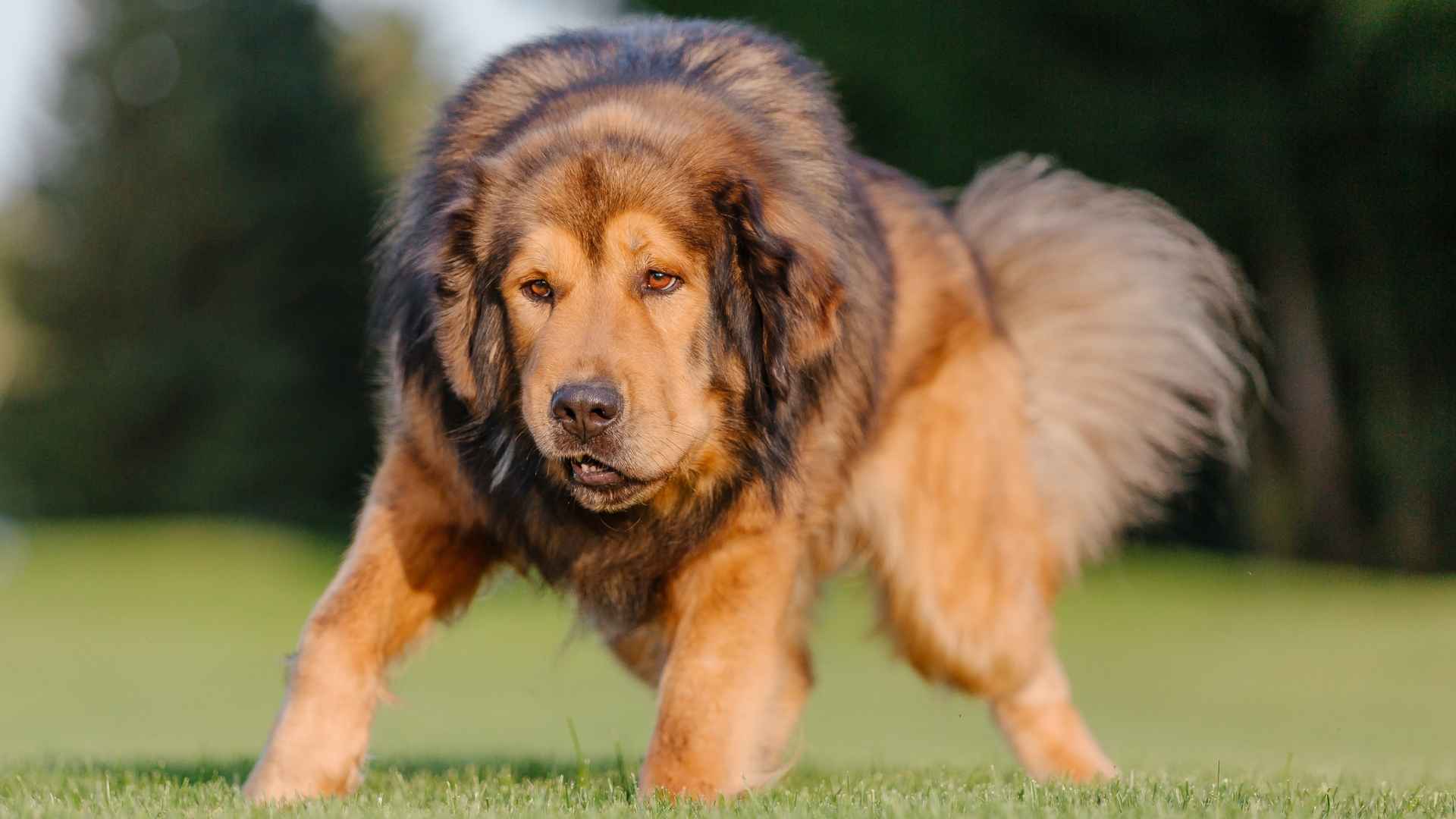Some dogs turn heads—and then there are the ones that stop traffic. Massive dog breeds aren’t just big; they’re majestic. Towering over most other pups with their impressive size, these gentle giants have a presence that commands attention and a personality that melts hearts.
If you’ve ever dreamed of a four-legged best friend who doubles as a body pillow and a loyal protector, these massive breeds might be just what you need. They’re big—some of the biggest dog breeds you’ll ever come across. Still skeptical? Just check out these (mostly) gentle giants for yourself below.
Despite their size, many of them are calm, nurturing, and great with families. They offer a unique mix of strength and sweetness that’s hard to resist. Of course, big dogs come with big responsibilities—feeding, training, and space are all part of the equation. But for those who can handle the size, the reward is huge—literally.
Ready to meet the towering titans of the dog world? Let’s explore the most massive dog breeds that bring big love and even bigger loyalty into your life.
Massive Dog Breeds
1. Saint Bernard
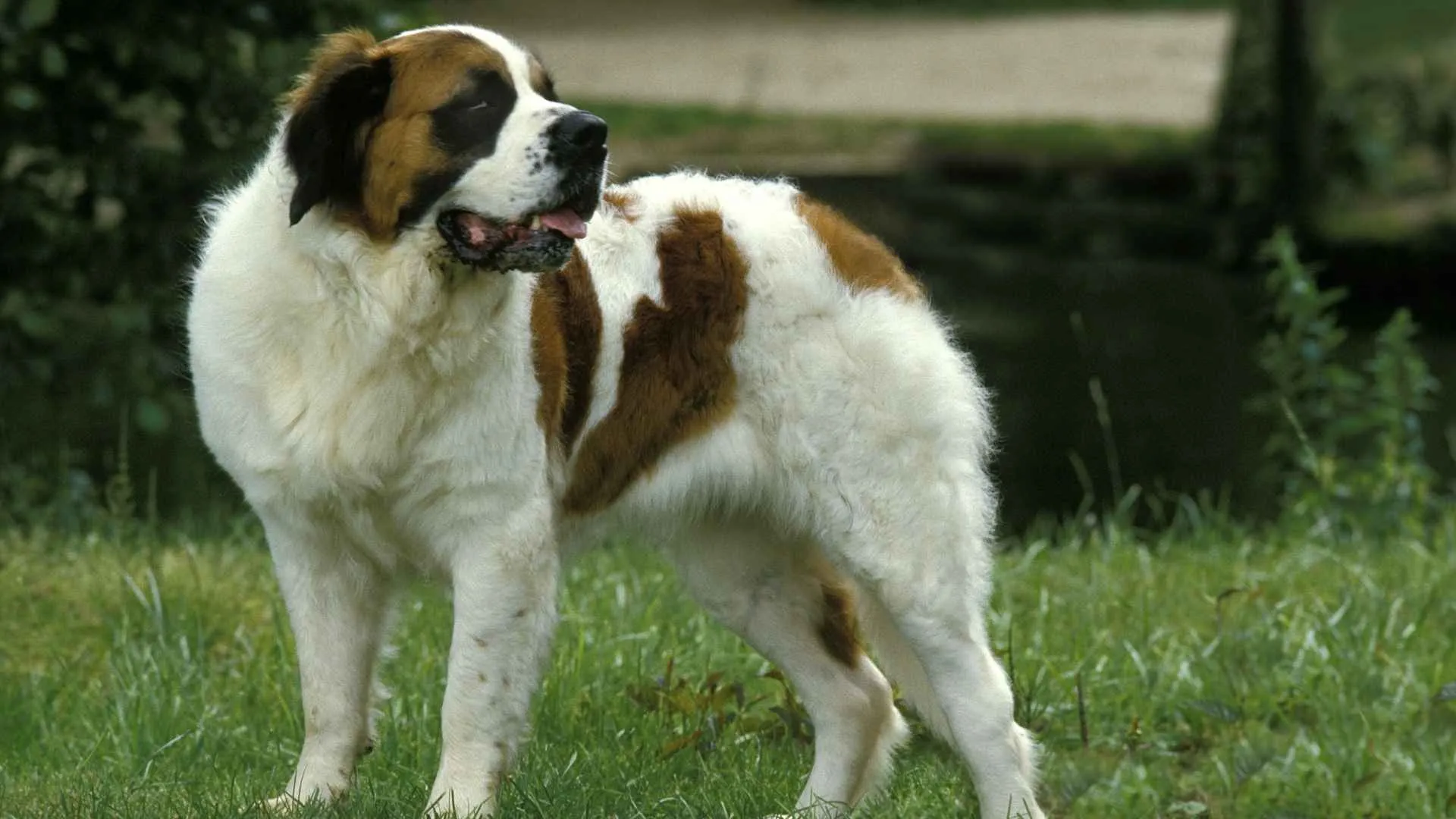
Known for their immense size and sweet nature, Saint Bernards are one of the most famous massive dog breeds. Originally bred by monks in the Swiss Alps, their primary job was to rescue travelers stranded in snowstorms.
Features
Size: Giant (26–30 inches tall at the shoulder)
Weight: 120–180 pounds
Life Expectancy: 8–10 years
Health: Prone to hip dysplasia, heart issues, and bloat
With their physical strength, deep sense of duty, and strong sense of smell, Saint Bernards were perfect for the harsh conditions of mountain rescue work. While they may have earned a bit of a bad reputation due to their imposing size, Saint Bernards are incredibly gentle giants and are known for their affectionate nature, especially towards children and family members.
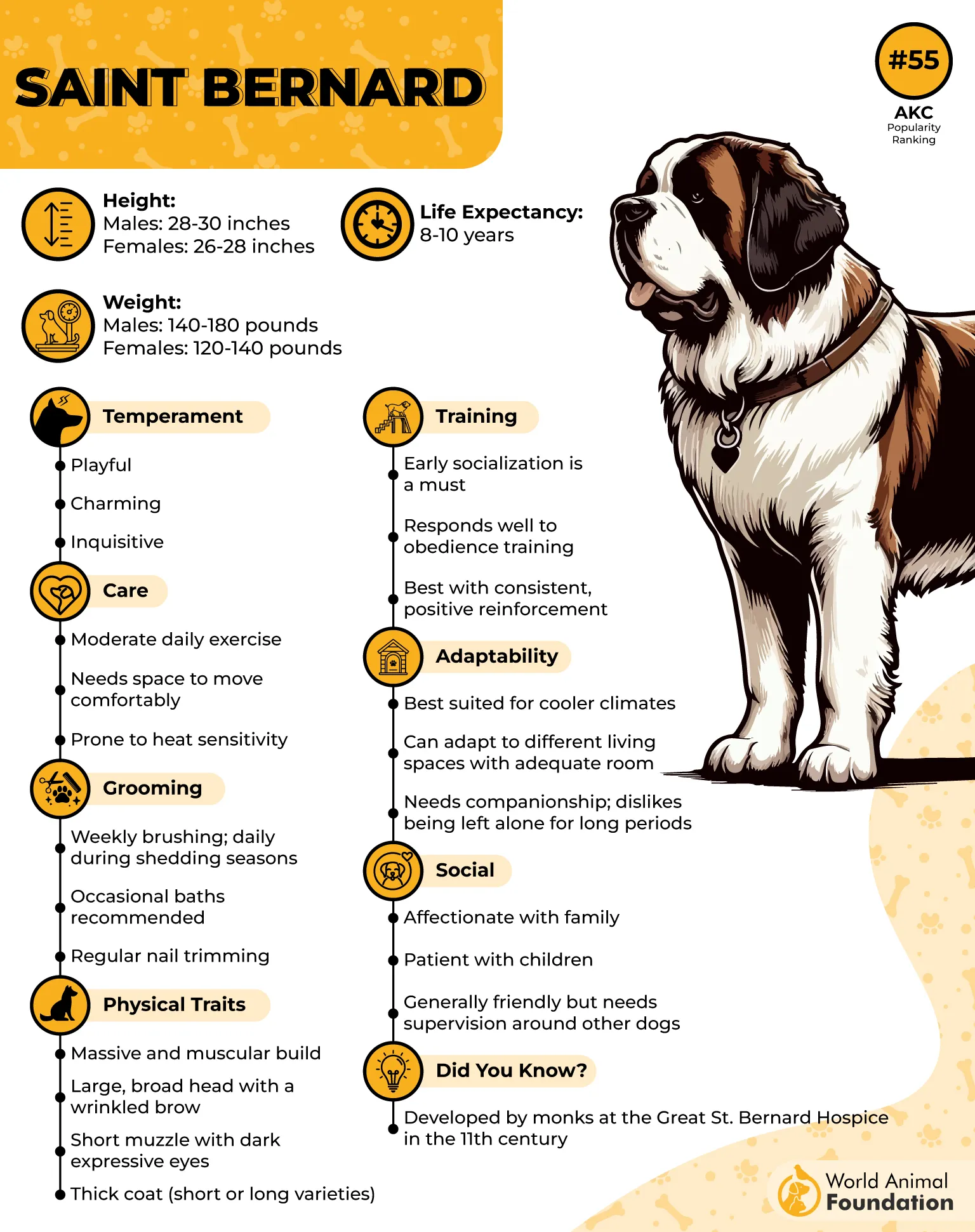
These dogs are naturally inclined to be calm-natured, making them great pets for families. This breed is highly intelligent and quick to learn, making them successful in socialization classes, puppy training, and obedience training.
The grooming routine for a Saint Bernard is similar for both long-haired and short-haired varieties. Both types need regular coat brushing, occasional baths, and consistent nail trimming.
Saint Bernards require ample space to move around. While they aren’t ideally suited for apartment living, they can thrive in a spacious apartment as long as they receive regular daily exercise, as noted by PetMD.
Fun Fact: Despite their massive size, Saint Bernards are known to be friendly and good with kids, proving that not all big dogs are scary!
2. Neapolitan Mastiff

If you’re looking for a dog that exudes power, protection, and an imposing presence, the Neapolitan Mastiff is a breed that certainly delivers.
With their loose, wrinkled skin, massive build, and muscular frame, these dogs are an unmistakable sight. They were originally bred to guard homes and property, and their natural instinct to protect makes them incredibly good guard dogs.
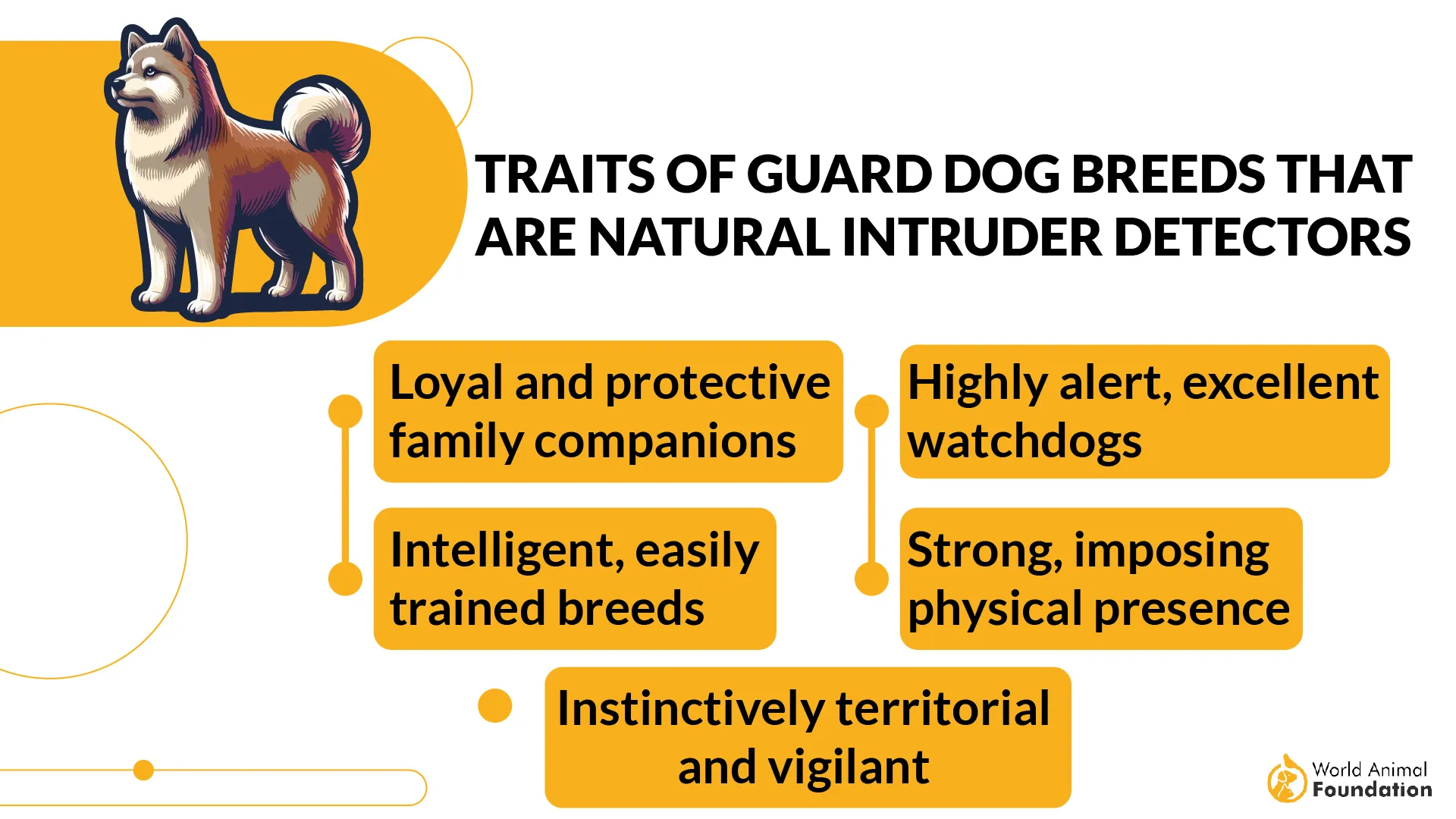
Features
Size: Giant (24–31 inches tall at the shoulder)
Weight: 110–150 pounds
Life Expectancy: 7–9 years
Health: Prone to hip dysplasia, bloat, and respiratory problems
Despite their tough exterior, Neapolitan Mastiffs are known to be loyal and affectionate with their families. They bond deeply with their owners and can be very protective of their loved ones.
However, their naturally suspicious nature means they need proper training and socialization, especially when it comes to interacting with strangers or other animals.
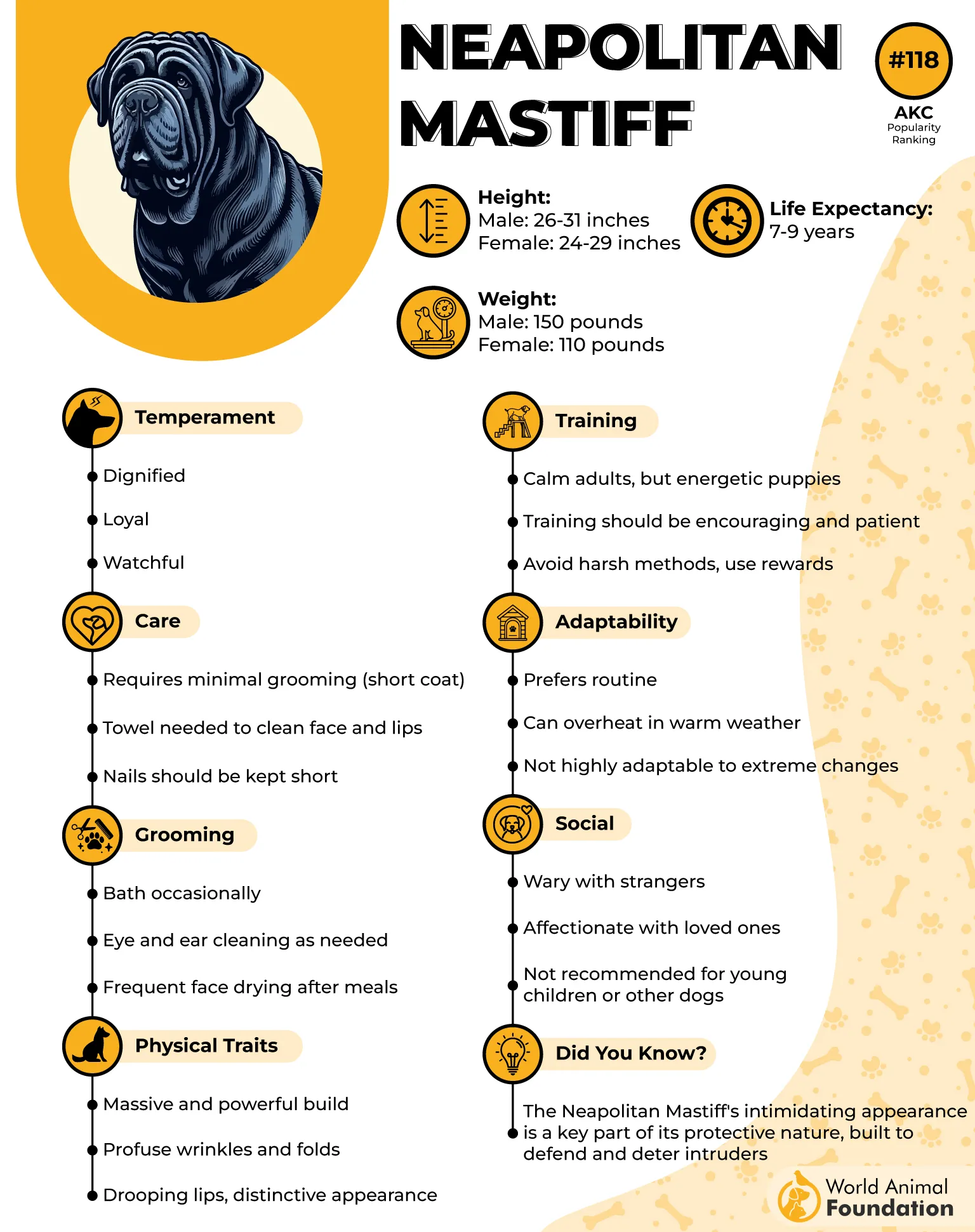
Their easygoing nature and relatively low-maintenance grooming needs make them excellent, dependable companions. Although they need less exercise than many other working breeds, they still benefit from consistent training and grooming to remain healthy and well-behaved.
While they may enjoy lounging, these large dogs should still get at least 20 minutes of activity twice a day. Regular walks are important for maintaining weight and supporting joint health.
Fun Fact: The Neapolitan Mastiff’s signature wrinkles aren’t just for show—they also help protect their body during a confrontation by absorbing impact!
3. Irish Wolfhound
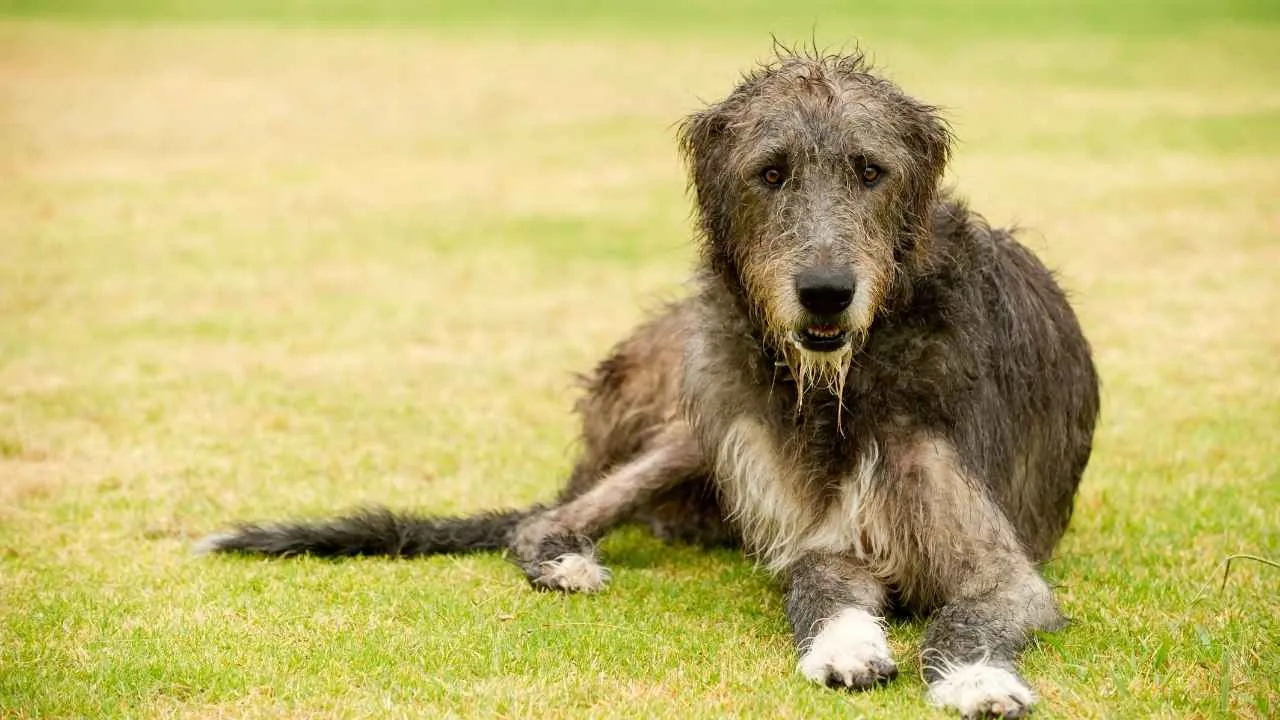
The Irish Wolfhound is the tallest dog breed recognized by the AKC, and their massive size doesn’t just make it impressive—it makes it downright majestic.
These guarding royalty were originally bred in Ireland to hunt large game like wolves and deer, and their strong sense of loyalty and instinct to protect have made them great family companions.
Features
Size: Giant (30–35 inches tall at the shoulder)
Weight: 105–120 pounds
Life Expectancy: 6–8 years
Health: Prone to heart disease, bloat, and hip dysplasia
While they may have been bred for hunting, Irish Wolfhounds are typically very calm and gentle. They are known for their affectionate nature and are great with kids, other dogs, and even cats.
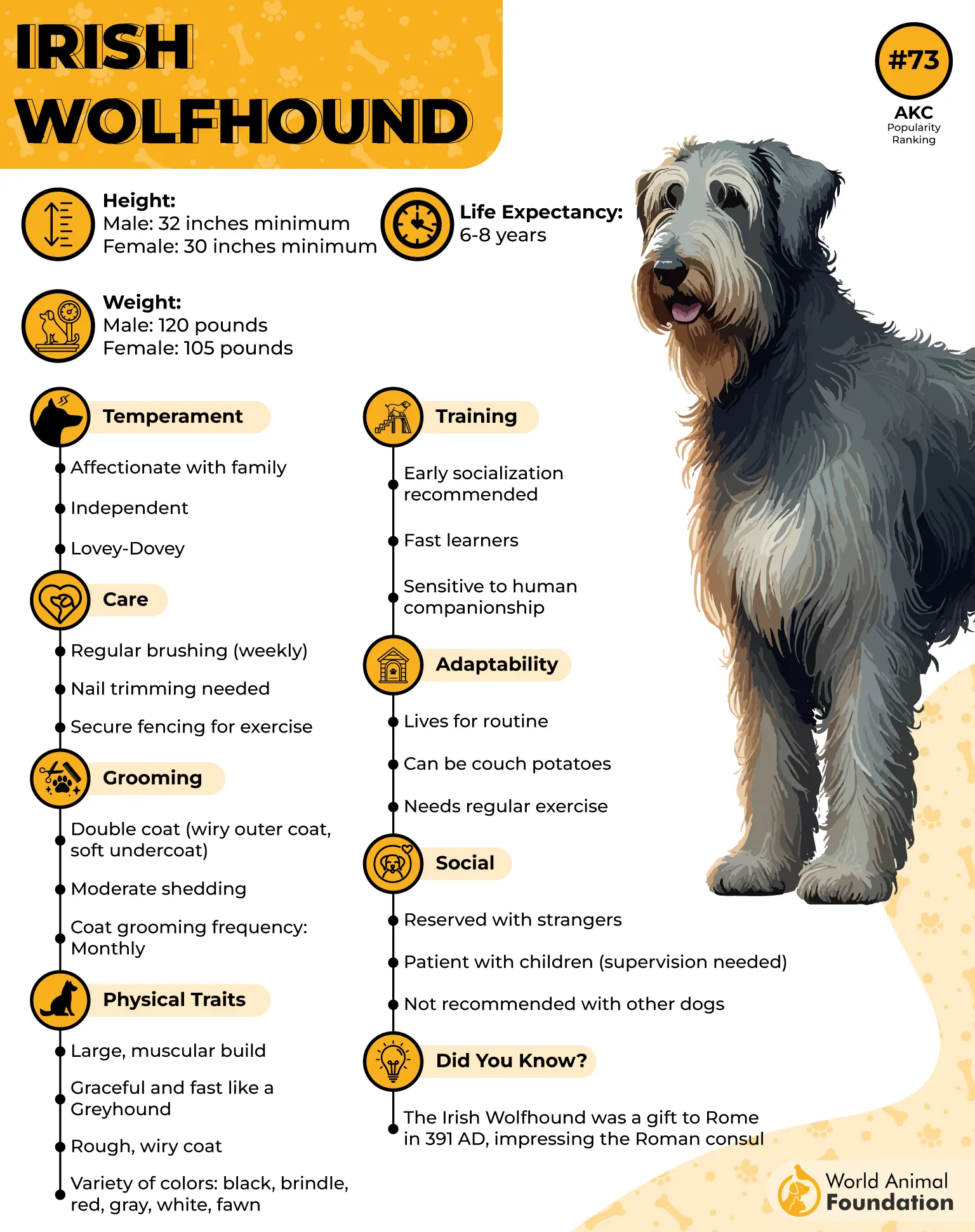
Their size can make them seem intimidating, but they are generally gentle giants. They are particularly known for being great with family members.
Purina states that their puppies and young adults can be energetic and boisterous, making them less suitable for families with young children.
Fun Fact: Despite being the tallest breed, these large dogs are known for their sweet temperament and their love of cuddling. Who would have thought a giant could be so soft-hearted?
4. Tibetan Mastiff
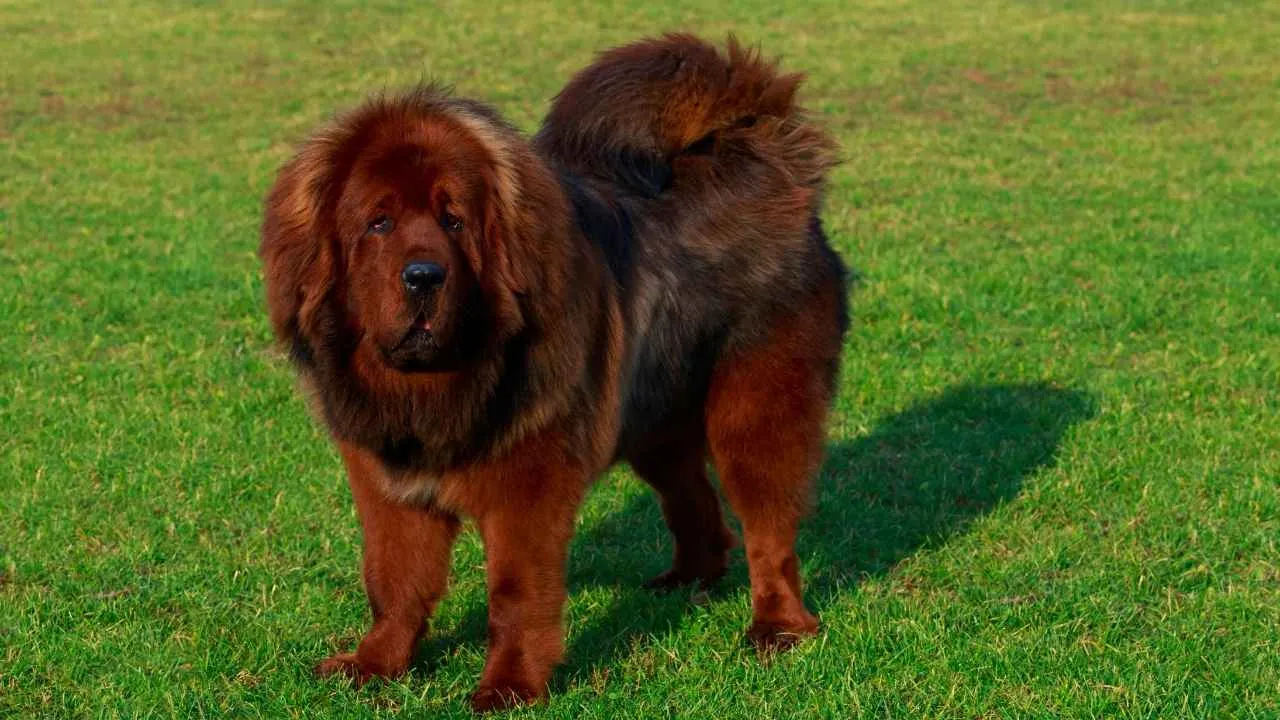
Tibetan Mastiffs are known for their majestic appearance and exceptional protective instincts. These large dogs were historically used to guard monasteries in Tibet against wild animals and intruders, earning their title as guardians of the Himalayas.
Features
Size: Giant (24–30 inches tall at the shoulder)
Weight: 70–150 pounds
Life Expectancy: 10–12 years
Health: Prone to hip dysplasia, hypothyroidism, and bloat
With a thick, lion-like mane and a calm but authoritative presence, Tibetan Mastiffs are extremely protective and tend to be naturally suspicious of strangers. Their deep sense of loyalty to their family members and their strong sense of territory make them excellent guard dogs.
Tibetan Mastiffs are intelligent but independent dogs that thrive when given a purpose. However, their low stamina means they aren’t suited for long runs or jogging.
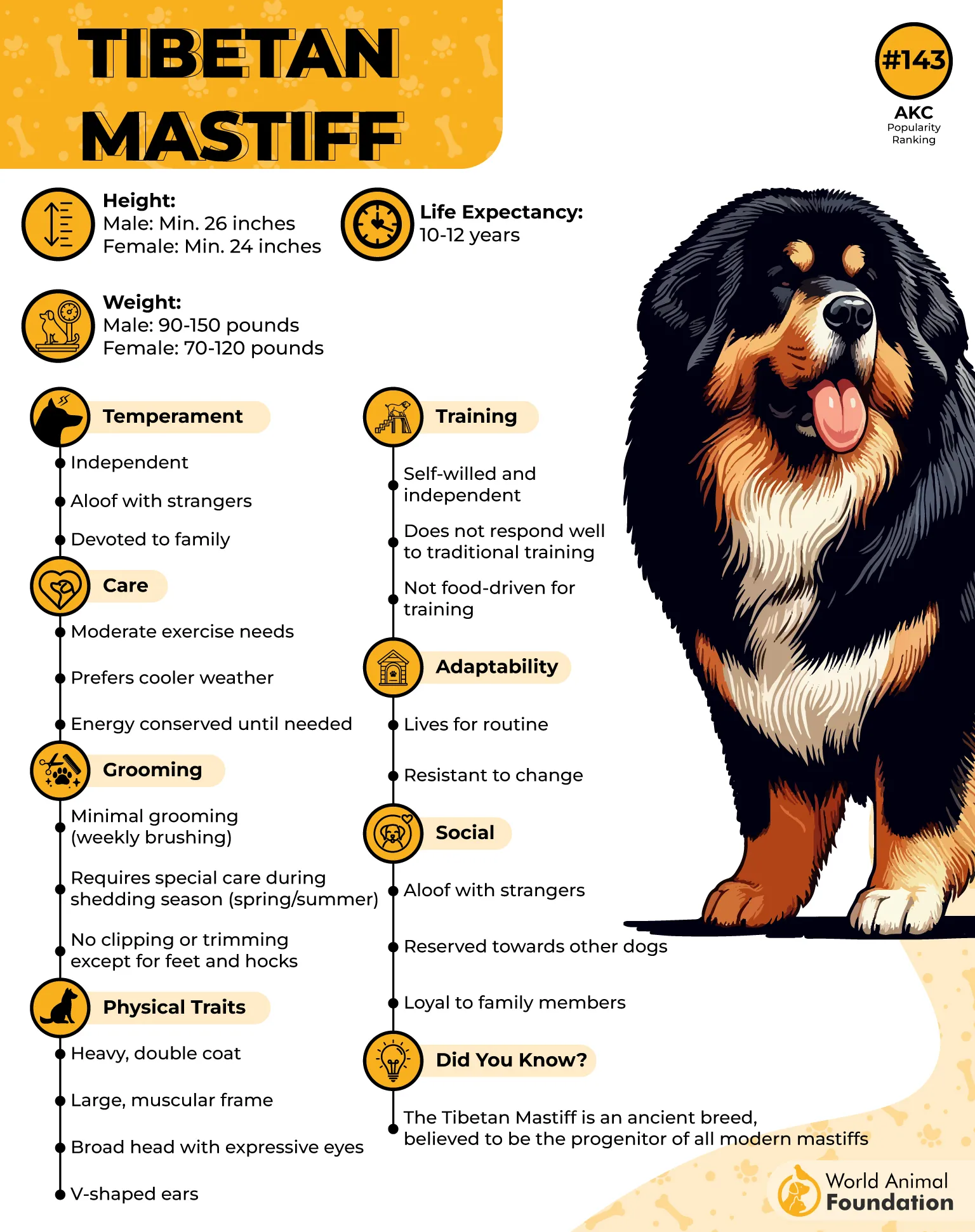
However, they are not for first-time dog owners. Tibetan Mastiffs are independent thinkers, known for making decisions on their own and acting accordingly, regardless of training. This natural instinct to protect means they need an experienced owner who can provide firm, consistent leadership and proper socialization.
While they are devoted to their families, they tend to be reserved with strangers and require careful introductions. These dogs need moderate exercise and ample space to roam, making them a poor fit for apartment living.
Fun Fact: Tibetan Mastiffs were once so highly valued that they were used as gifts for royalty, earning them the nickname “guardians of the throne.”
5. Leonberger
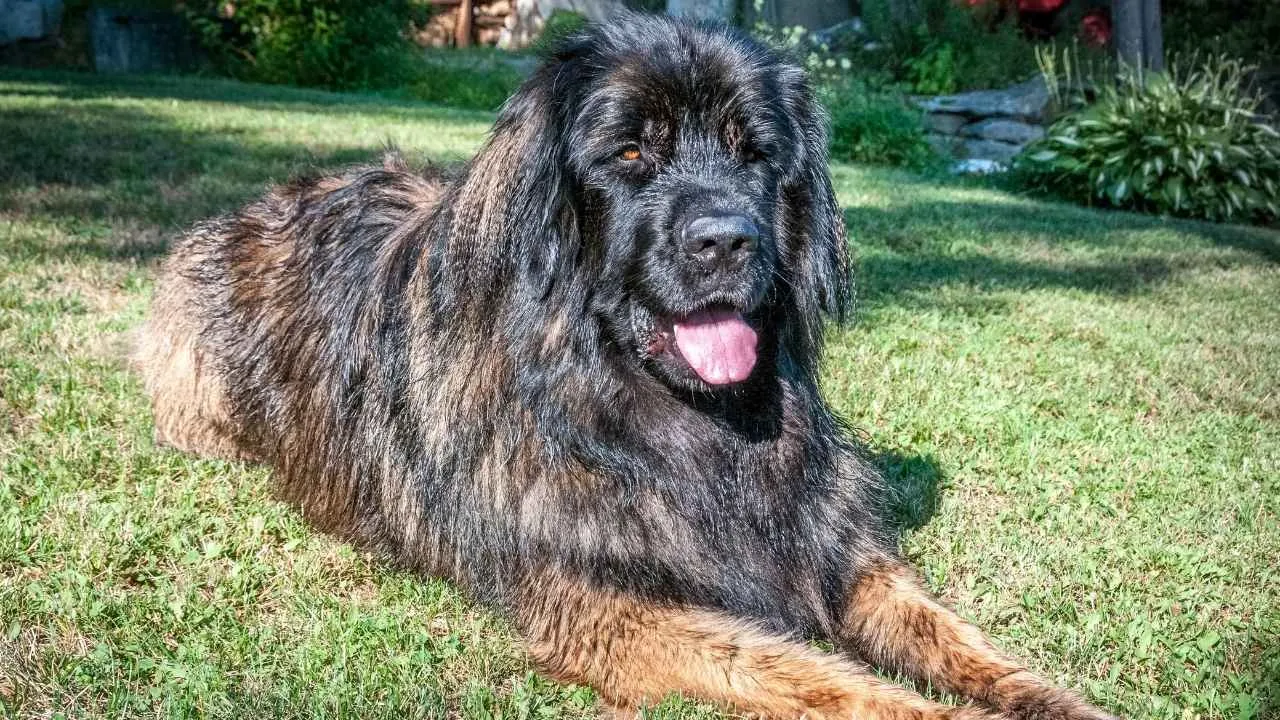
With their lion-like mane and impressive stature, Leonbergers are one of the most majestic of the largest dog breeds. Originally developed as a companion dog for European royalty, this breed later became a versatile working dog on farms.
Leonbergers have an alert posture, characterized by their massive, broad head, deep-set eyes, square-shaped muzzle, strong muscular frame, and a feathered tail that curls over their back.
Leonbergers are calm, affectionate, and generally good with children, but their large size means they can unintentionally overwhelm small kids.
While they’re typically tolerant of strangers if socialized early, WebMD notes that Leonbergers may show aggression toward unfamiliar dogs. They’re not suited for kennel living and thrive best when close to their family, forming strong emotional bonds and displaying a keen sensitivity to their owners’ feelings.
Features
Size: Giant (25–31 inches tall at the shoulder)
Weight: 90–170 pounds
Life Expectancy: 7–8 years
Health: Prone to hip dysplasia, heart issues, and bloat
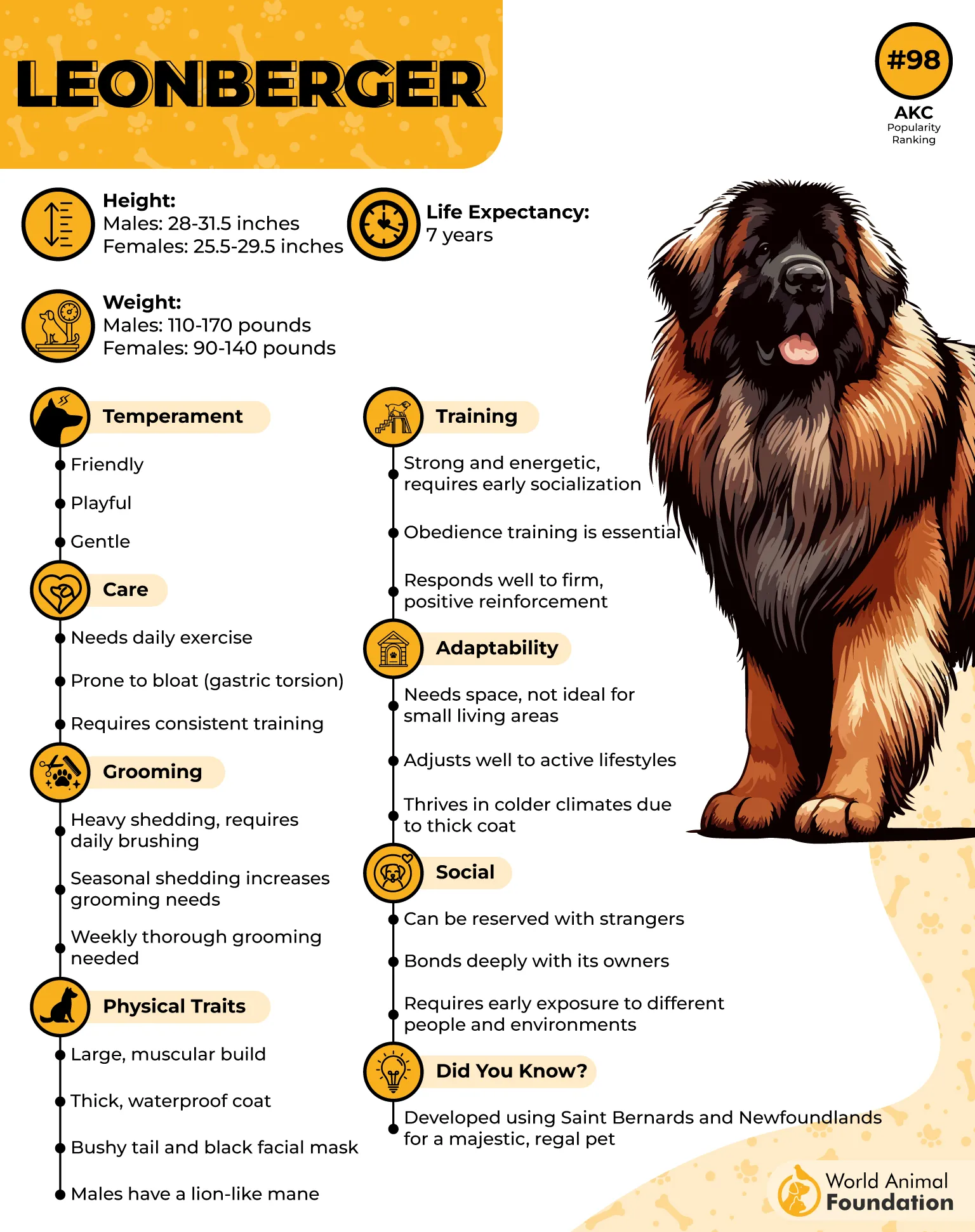
Their friendly, loyal nature, combined with their size and strength, makes them excellent watchdogs and family companions.
While their main role was as a companion, Leonbergers also excel at cart pulling and draft work, making them quite versatile. These dogs are known for their devotion to family, and their gentle nature makes them good with kids, other dogs, and even other animals when properly trained.
Fun Fact: The Leonberger’s lion-like mane and massive size earned it the nickname “The King of Dogs” in its native Germany.
6. Newfoundland
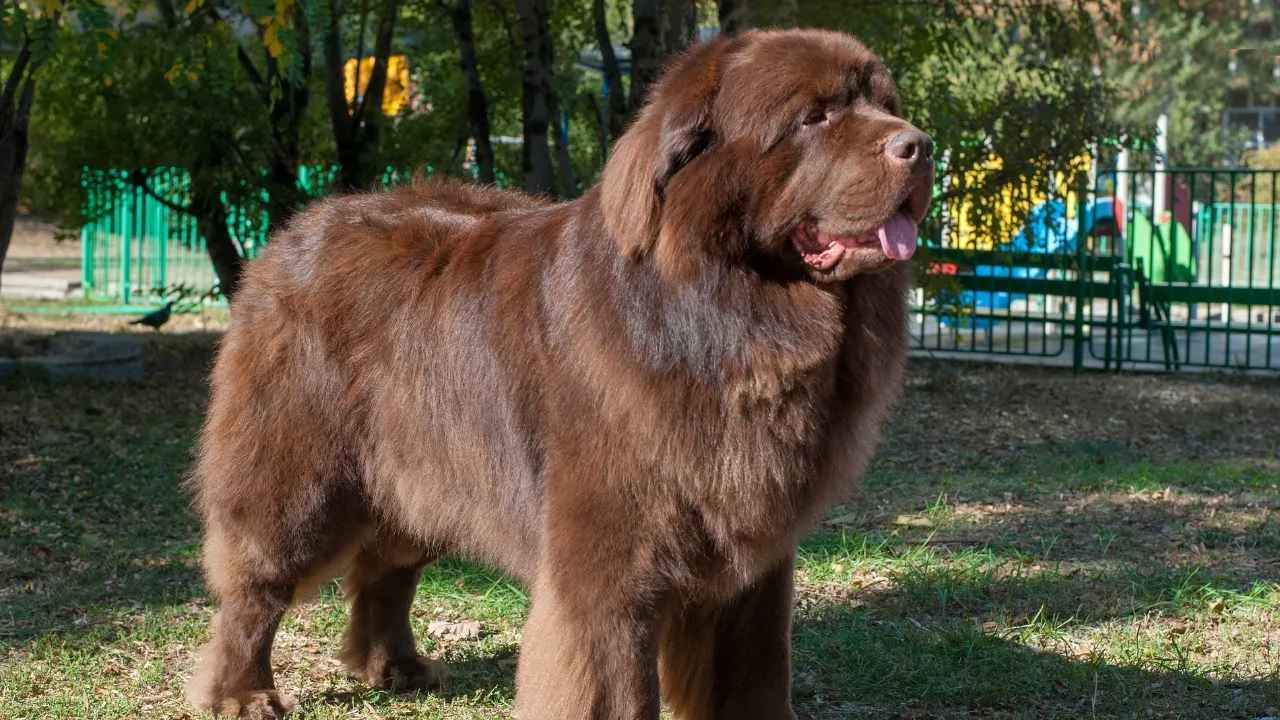
The Newfoundland is a massive breed known for its strength, swimming ability, and water rescue skills. These dogs were originally bred to help Canadian fishermen pull nets from icy waters and perform heroic water rescues.
Their webbed feet, water-repellent coat, and immense physical strength make them perfect for working in water, and they continue to serve in water rescue operations worldwide.
Features
Size: Giant (26–28 inches tall at the shoulder)
Weight: 100–150 pounds
Life Expectancy: 9–10 years
Health: Prone to hip dysplasia, heart issues, and bloat
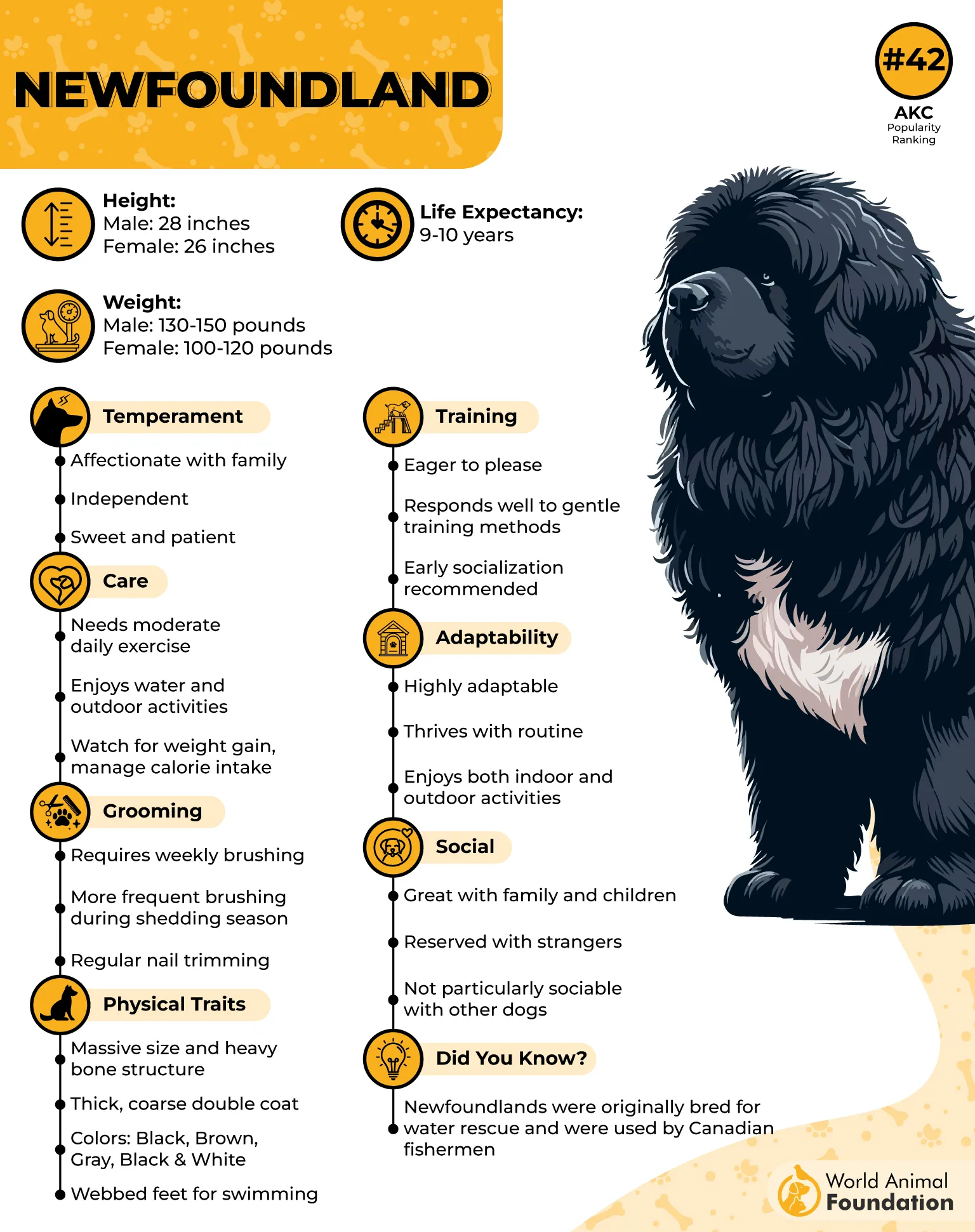
Newfoundlands are also protective of their families. Their easygoing nature and relatively low-maintenance grooming needs make them excellent, dependable companions.
Despite their massive size, Newfoundlands are known for being gentle giants, especially with kids. They are calm, affectionate, and incredibly loyal to their families.
Fun Fact: Newfoundlands have been known to save lives, even acting as lifeguards for drowning people due to their remarkable swimming skills!
7. Scottish Deerhound
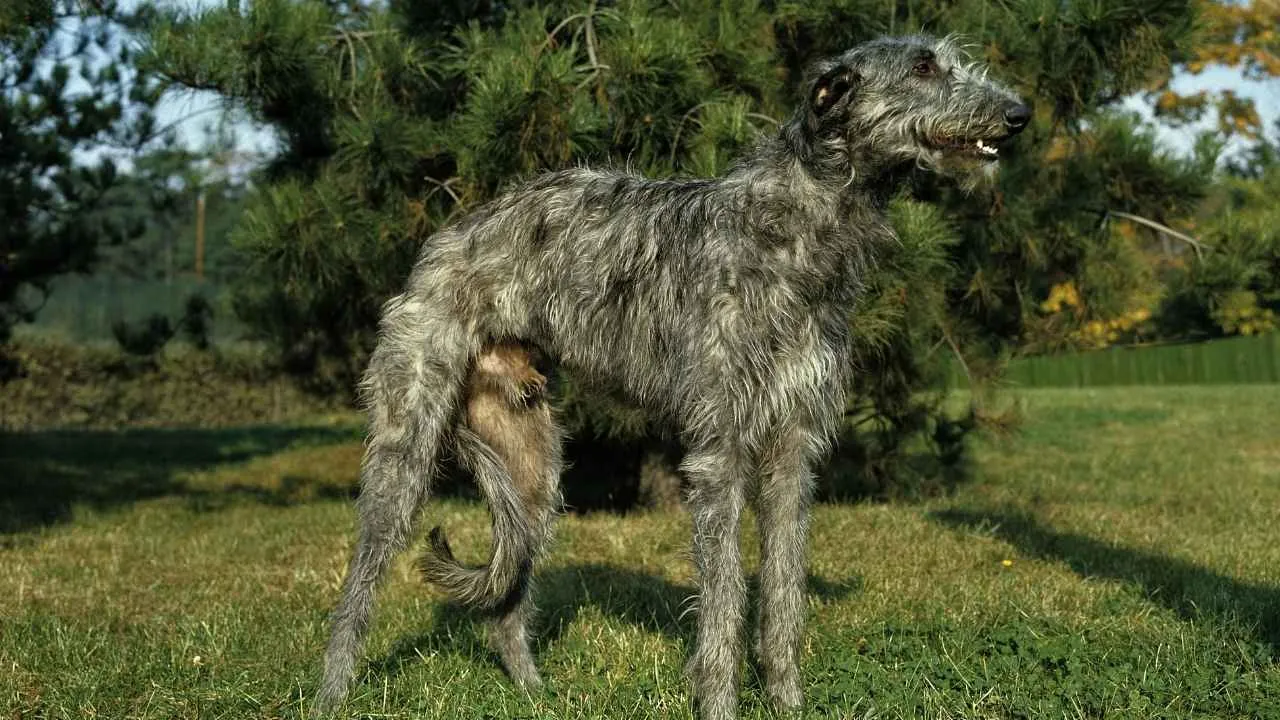
The Scottish Deerhound is one of the tallest breeds of dogs in the world and was originally bred to hunt large game such as deer in Scotland.
Known as the royal dog of Scotland, this giant breed was prized by royalty for their courage, speed, and stamina. With their tall, slender build, they were born to run and excel in courses where speed is essential.
Features
Size: Giant (28–32 inches tall at the shoulder)
Weight: 75–110 pounds
Life Expectancy: 8–11 years
Health: Prone to heart disease, bloat, and hip dysplasia
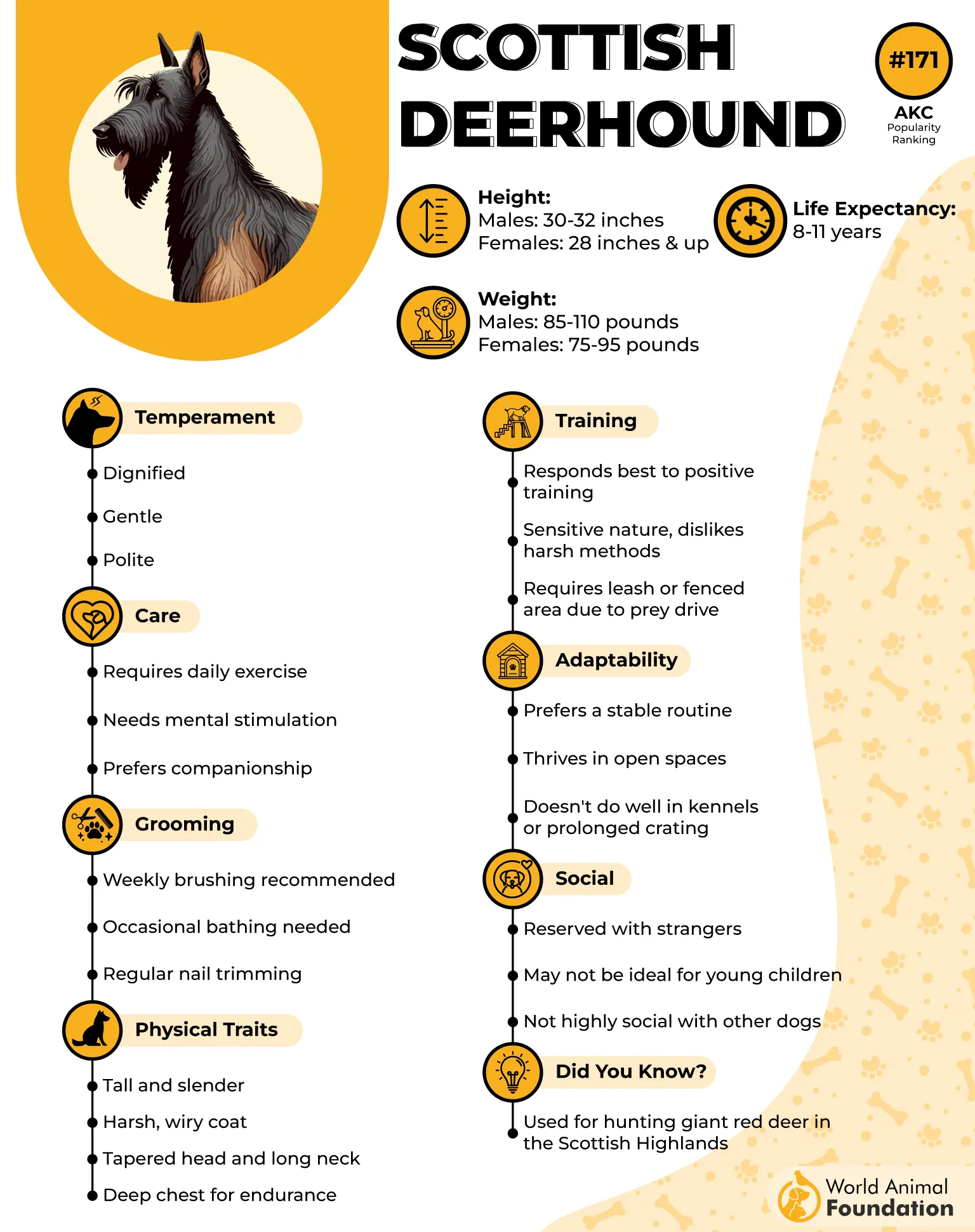
Although they were bred to hunt, Scottish Deerhounds are incredibly gentle and sensitive. They form strong bonds with their family members and struggle with being left alone for long periods.
Their naturally inclined protective nature and strong prey drive mean they need proper training to ensure they remain well-behaved, especially around smaller animals.
Fun Fact: The Scottish Deerhound’s graceful movement and majestic stature earned them a spot in royal history, often seen as the favorite dog of Scottish kings.
8. Mastiff
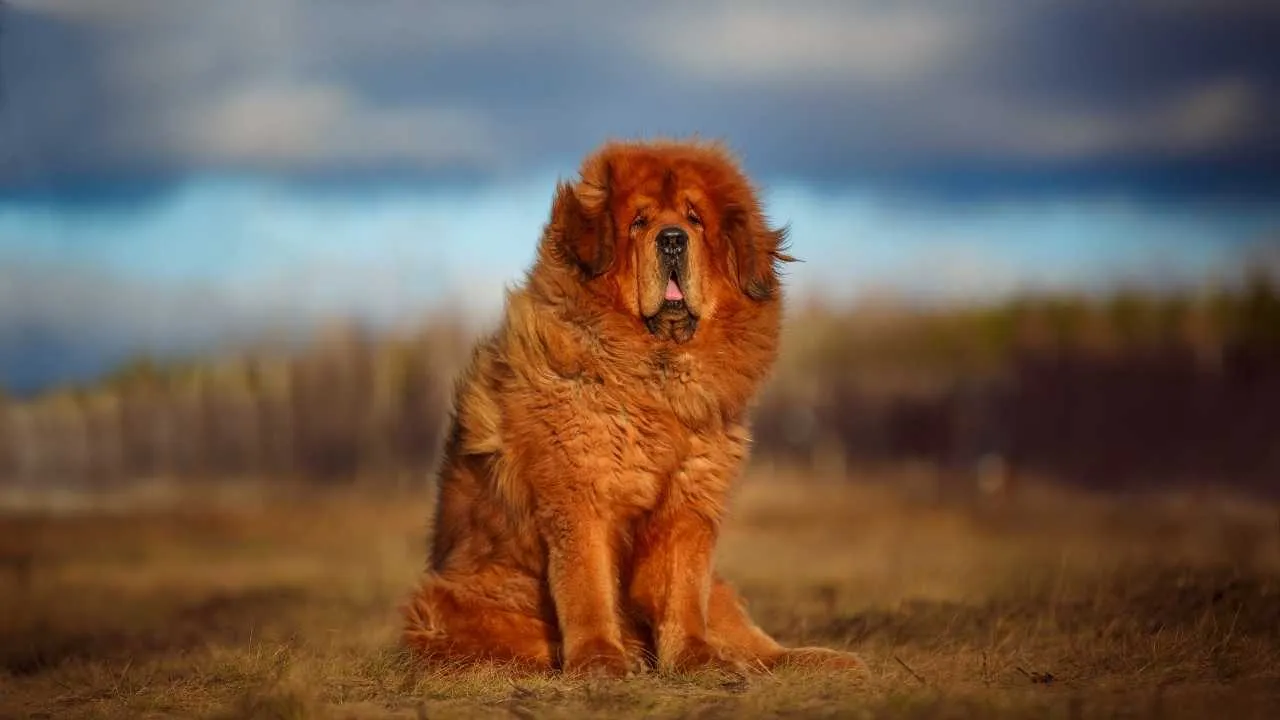
The Mastiff is an ancient breed known for its massive frame, protective instincts, and unwavering loyalty to its family. These dogs were originally bred as guard dogs, often used to protect property, livestock, and even royalty.
Despite their size, English Mastiffs are known for being gentle giants. They are patient with children and can be calm around other animals when raised together. With specialized training and consistent leadership, Mastiffs can thrive in family environments.
Features
Size: Giant (27–33 inches tall at the shoulder)
Weight: 110–230 pounds
Life Expectancy: 6–12 years
Health: Prone to hip dysplasia, heart issues, and bloat
With their deep bark and droopy face presence, Mastiffs are naturally wary of strangers, which makes them excellent watchdogs.
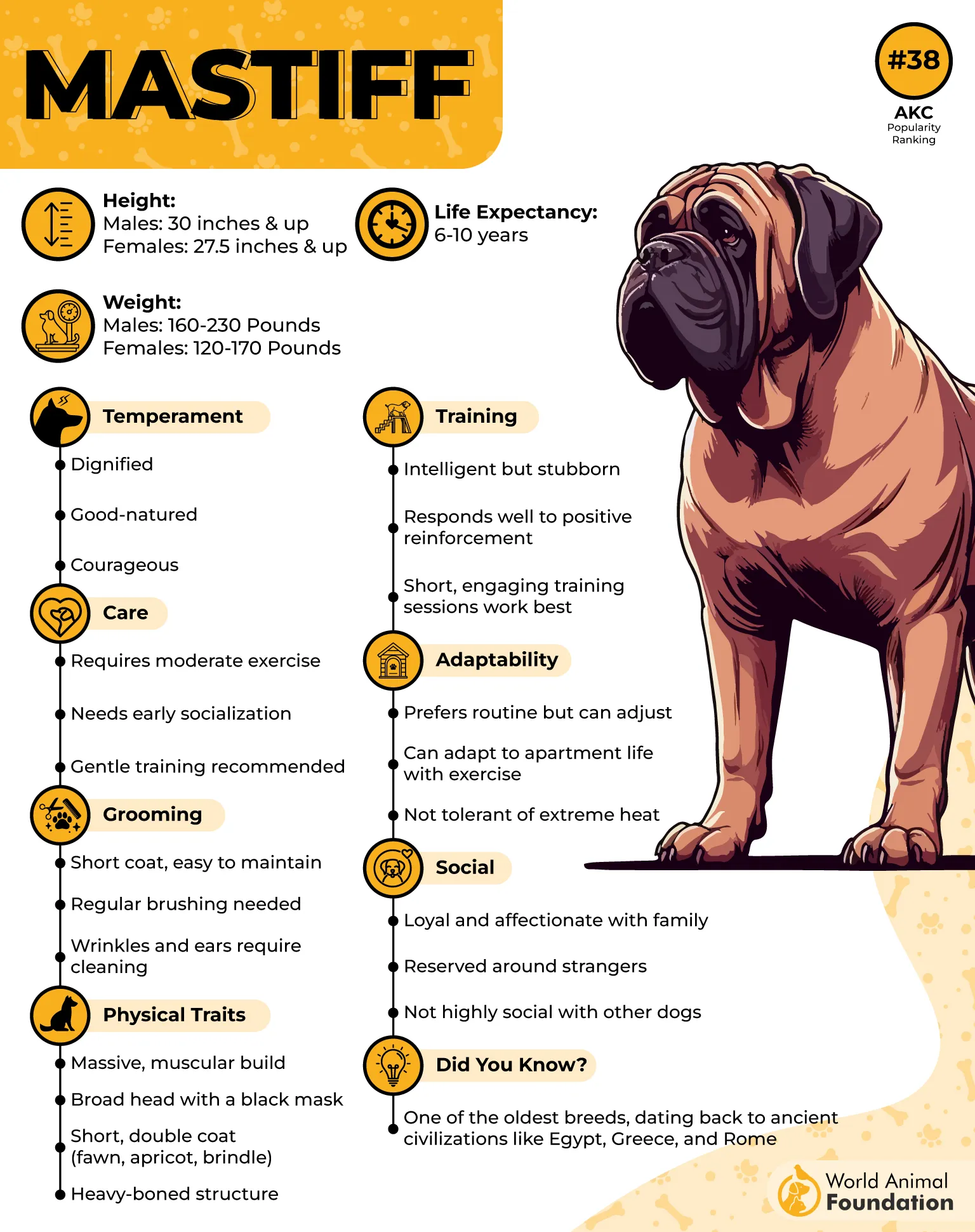
Their loyalty to their family members is legendary, and once they bond with you, they will protect you at all costs. However, their protective nature means early socialization is crucial. Without proper exposure to other animals, people, and environments, Mastiffs can become overly protective or territorial.
Fun Fact: Mastiffs were once used as war dogs, protecting soldiers and even fighting alongside them in ancient battles.
9. Great Pyrenees
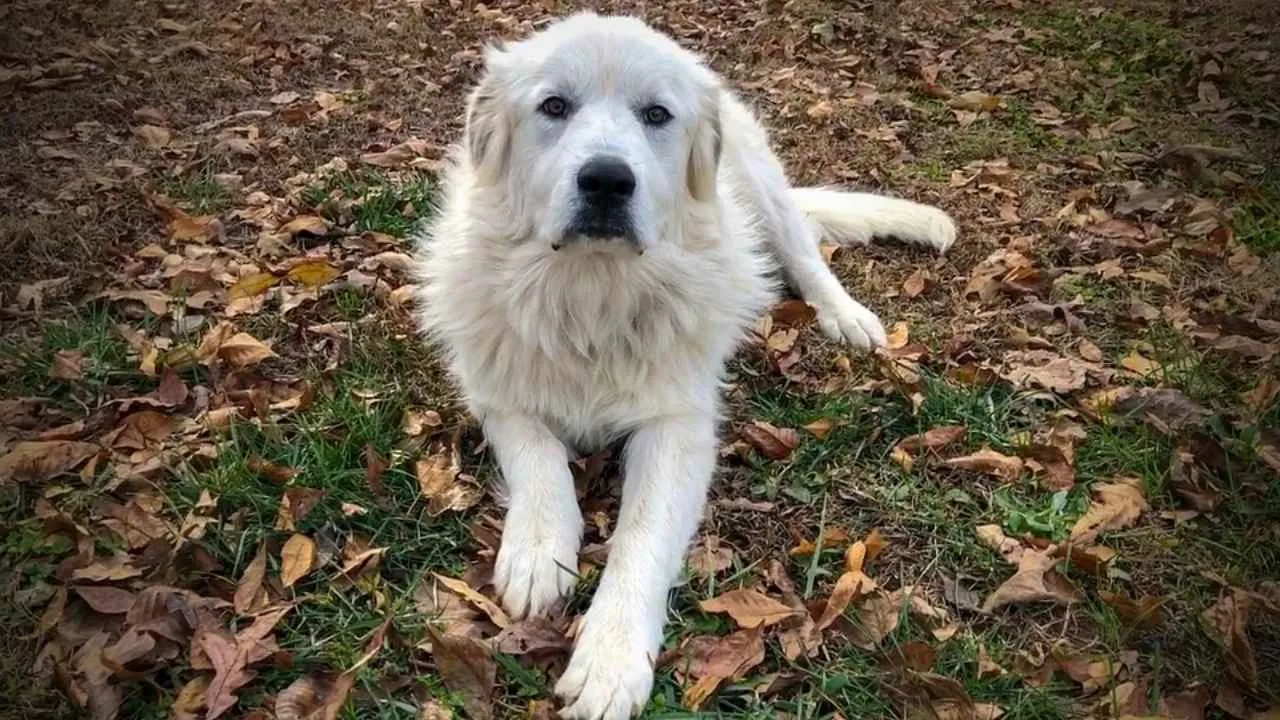
Last but not least, the Great Pyrenees is another giant breed with a strong protective instinct. Known for their majestic, fluffy white coats and calm demeanor, these fluffy dogs were originally bred to guard flocks of sheep in the rugged mountains of France and Spain. Their role as flock guardians means they are naturally inclined to protect their home and family members, including other animals.
Features
Size: Giant (25–32 inches tall at the shoulder)
Weight: 85–115 pounds
Life Expectancy: 10–12 years
Health: Prone to hip dysplasia, heart issues, and certain types of cancer
Great Pyrenees are naturally suspicious of strangers and will take their time assessing a situation before responding. Their protective nature makes them great guard dogs, but they need consistent training and socialization to help them distinguish between true threats and normal situations.
The Great Pyrenees is a breed that doesn’t require a highly active lifestyle, often being low-energy and enjoying their alone time. This independent nature can make them strong-willed during training.
Despite their abundant fur, their grooming needs are not excessive because their long outer coat is naturally dirt- and tangle-resistant, which helps keep maintenance easier, says PetMD.
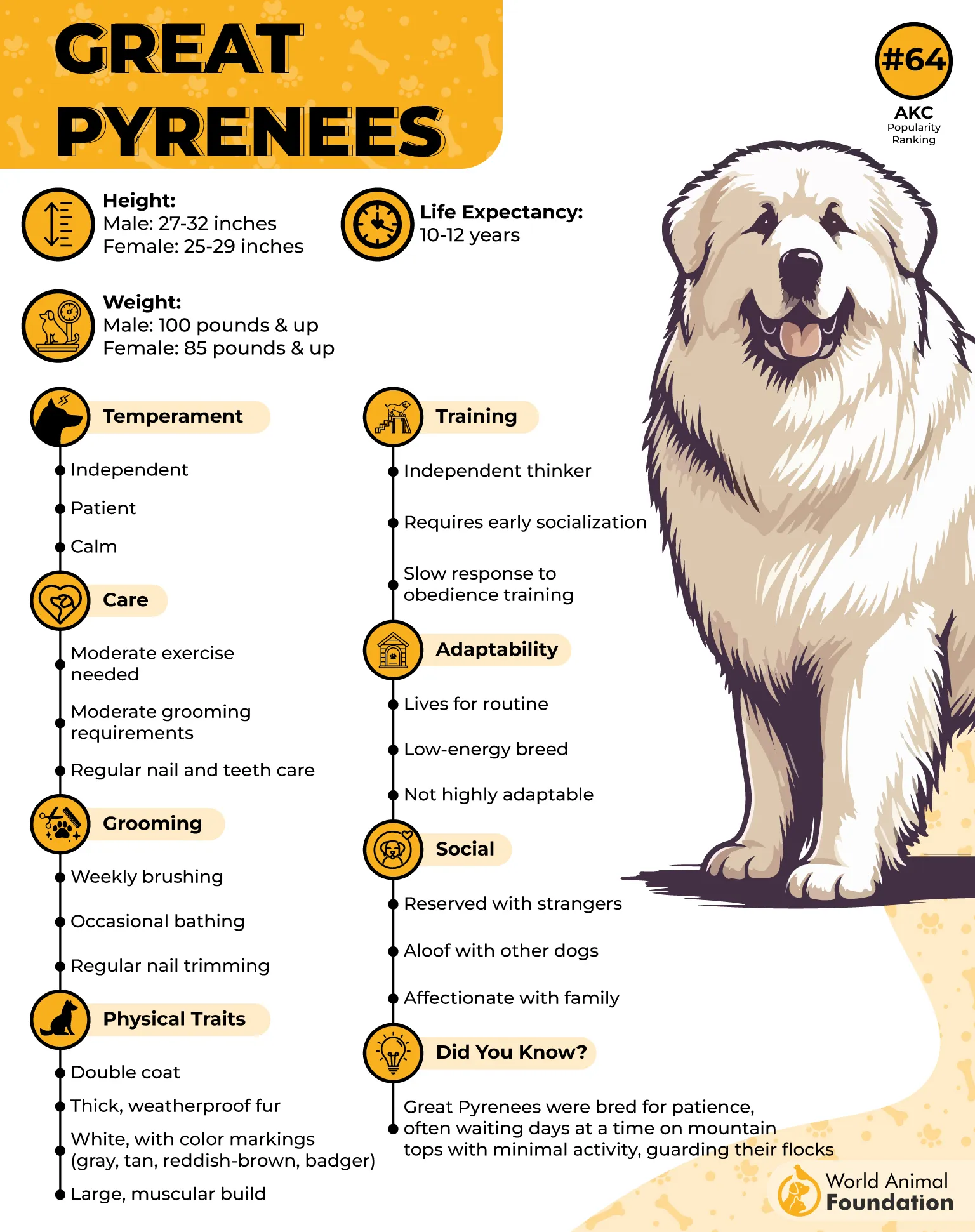
Despite their size, they are known for being calm and easygoing when not on duty. However, they are highly territorial and will not hesitate to defend their home if they feel it’s threatened.
Fun Fact: Great Pyrenees were so revered for their guarding abilities that they were often entrusted with guarding royalty’s livestock, a responsibility they carried out with grace and dedication.
Conclusion
Massive dog breeds such as the Great Danes, Anatolian Shepherds, Cane Corsos, Bernese Mountain Dogs, Black Russian Terriers, Italian Mastiffs, and Dogue de Bordeaux are not mentioned above, but they are known not only for their impressive size but also for their strength, loyalty, and protective nature. Originally bred as working dogs, farm dogs, or livestock guardians, many of these breeds were used for hunting wolves, standing guard, or protecting humans and property in challenging environments like the Pyrenees Mountains.
These giant dog breeds typically have a thick double coat, require regular brushing, and need enough space, enough room, and enough exercise to thrive, especially if kept as family pets. Due to their strong-willed personalities, early training is crucial to ensure they integrate well with pet parents, other animals, and children.
Although smaller breeds are often easier to manage, the right training, environment, and commitment can make even the largest breeds gentle giants and loyal companions. For pet owners with the space, time, and understanding, these majestic mountain dogs can be the ultimate protectors and affectionate members of the family.


